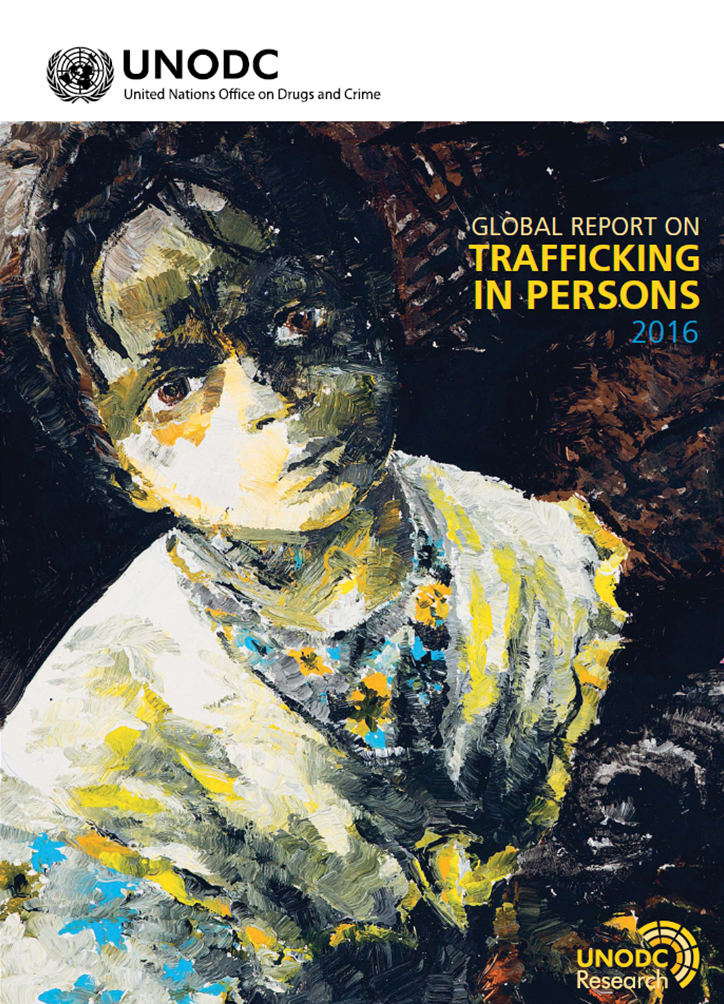Almost a third of trafficking victims are children: UNODC report

2016 report highlights recruitment or abduction of children by armed groups for forced marriages, sexual slavery or as combatants
New York / Vienna, 21 December 2016 - Children make up almost a third of all human trafficking victims worldwide, according to a report released today by the United Nations Office on Drugs and Crime (UNODC). Additionally, women and girls comprise 71 per cent of human trafficking victims, the Global Report on Trafficking in Persons states.
"Trafficking for sexual exploitation and for forced labour remain the most prominently detected forms, but victims are also being trafficked to be used as beggars, for forced or sham marriages, benefit fraud, or production of pornography," said UNODC Executive Director Yury Fedotov in presenting the report.
The report found that while women and girls tend to be trafficked for marriages and sexual slavery, men and boys are typically exploited for forced labour in the mining sector, as porters, soldiers and slaves. While 28 per cent of detected trafficking victims worldwide are children, in regions such as Sub-Saharan Africa, and Central America and the Caribbean children comprise 62 and 64 per cent of victims, respectively.
Mr. Fedotov emphasized the link between armed groups and human trafficking, noting how armed groups often engage in trafficking in their territories of operation, coercing women and girls into marriages or sexual slavery, and pressing men and boys to act as forced labour or combatants. In this regard, this year Nadia Murad, UNODC Goodwill Ambassador for the Dignity of Survivors of Human Trafficking, has told her heartbreaking account of being enslaved by ISIL terrorists who took her and thousands of Yazidi women captive in Iraq.
This year's report includes a thematic chapter focusing on the connections between trafficking in persons, migration and conflict.
"People escaping from war and persecution are particularly vulnerable to becoming victims of trafficking," said Mr. Fedotov. "The urgency of their situation might lead them to make dangerous migration decisions. The rapid increase in the number of Syrian victims of trafficking in persons following the start of the conflict there, for instance, seems to be one example of how these vulnerabilities play out," he added.
Data included in the report revealed that trafficking in persons and regular migration flows broadly resemble each other for some destination countries in different parts of the world. Factors that increase vulnerability to human trafficking during the migration process include the presence of transnational organized crime in the country of origin, and a person's socio-economic profile.
The report also includes information on the multitude of trafficking flows, including within countries, between neighbouring countries or even across different continents. More than 500 different examples of these flows were detected between 2012 and 2014. Mention is made, for example, on trafficking victims from countries in Sub-Saharan Africa and East Asia, who are trafficked to a wide range of destinations. A total of 69 countries were reported to have detected victims from Sub-Saharan Africa in this same period.
"Some one hundred and fifty-eight, or eighty-eight per cent, of countries have criminalized human trafficking, in line with the Protocol [to Prevent, Suppress and Punish Trafficking in Persons], "added Mr. Fedotov. "This is a huge improvement since 2003, when only eighteen per cent of countries had such laws on their books. Nevertheless, as we highlighted in the last report, the rate of convictions remains far too low, and victims are not always receiving the protection and services countries are obliged to provide."
The UNODC Chief stressed that more resources clearly need to be devoted to identify and assist trafficking victims, as well as improve criminal justice responses to detect, investigate and successfully prosecute cases.
The report, produced by UNODC every two years, reinforces the link between tackling this crime and achieving the 2030 Agenda's Sustainable Development Goals. On the New York Declaration adopted at the Summit for Refugees and Migrants in September it was further stressed that refugees and migrants in large movements were at risk of being trafficked, and that states needed to combat human trafficking and migrant smuggling as part of comprehensive responses to development and migration.
Follow the report's launch on @UNODC and using the hashtag #EndHumanTrafficking
2016 Global Report on Trafficking in Persons (Executive Summary)
For further information, please contact:
Carlos Gómez del Campo
Public Information Officer, UNODC
E: carlos.gomezdelcampo[at]unodc.org